Cold Sear Steak Recipe
Published June 20, 2024. This post may contain affiliate links. Please read my disclosure policy.
This new school cold sear steak recipe is started in a cold pan and heated until the steak develops a beautiful brown sear for a foolproof procedure. You will love how easy this cooking technique is and how quickly it cooks.
Occasionally, we have a taste for beef, and if you’re looking to try out some new steak recipes, then definitely check out my Chopped Steak or Sous Vide Steak.
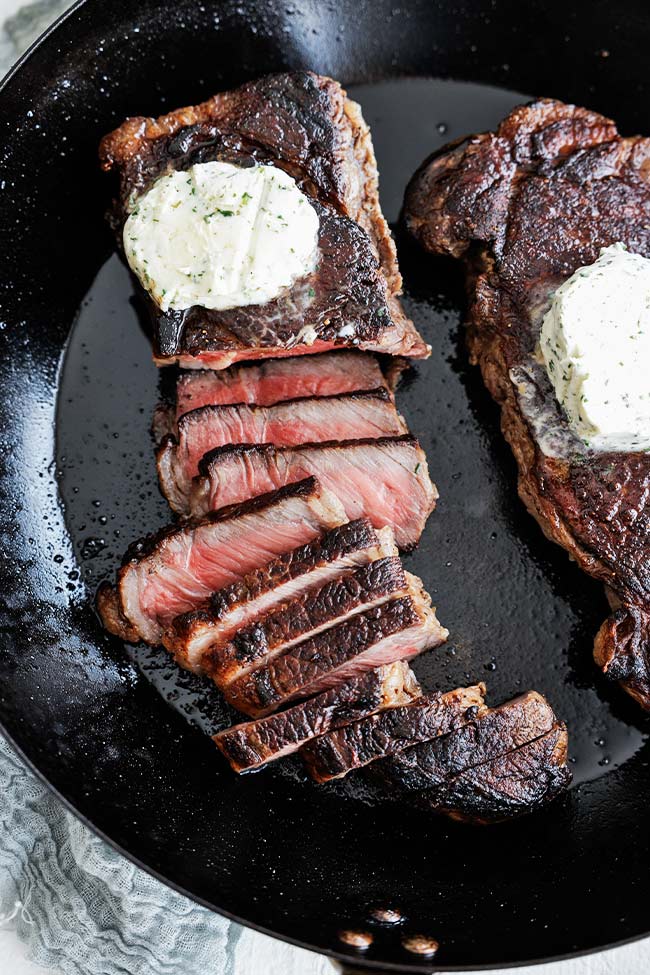
Cold Sear Steak
Cold-seared steak is a cooking procedure developed by Cooks Illustrated. In this procedure, a steak is placed in a cold pan and heated to high while slowly starting to sear. The steak is then flipped every two minutes to develop a dark Maillard crust.
The advantages of this process are that minimal oil will splatter from outside the pan, dirtying the counter and cooktops, and the back-and-forth flipping creates an even cook. This is an extremely easy, fool-proof procedure that renders excellent results, especially for beginner cooks.
Ingredients and Substitutions
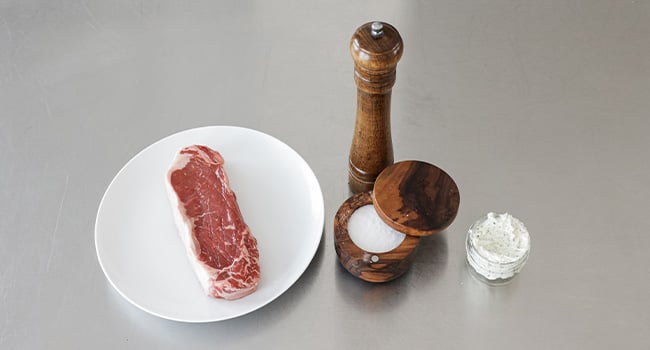
- Steak – The best cuts are New York strip, ribeye, filet mignon, top sirloin, or flank steak.
- Seasoning – I used only coarse salt and freshly cracked pepper. A steak rub or seasoning is not advised, as it will burn when searing.
- Butter – I like to finish steaks with my maître d’ butter, which has lemon, parsley, salt, and pepper. However, add some freshly squeezed lemon juice and whole butter or herb or garlic compound butter.
How to Cold Sear a Steak
Start by patting the steak down on all sides with paper towels. Moisture is always the enemy of achieving a good Maillard brown crust.
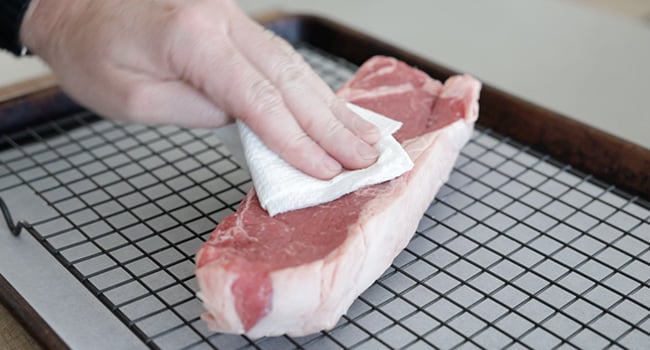
Place the steak on a rack over a sheet tray and generously season both sides with coarse salt.
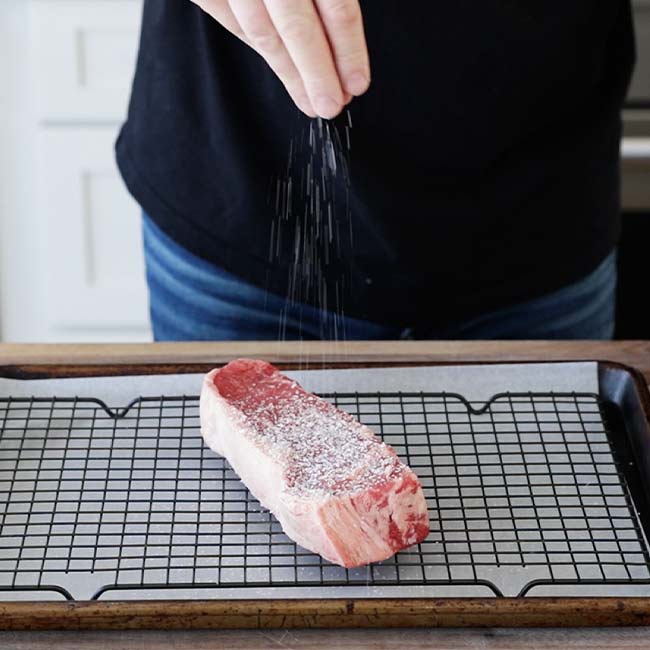
Put the steak on the rack in the refrigerator uncovered for 4 to 24 hours. During this time, the salt penetrates into the steak, making every bite delicious. In addition, it will help dry out the outer surface for optimal searing. This process is known as pre-seasoning or dry brining a steak.
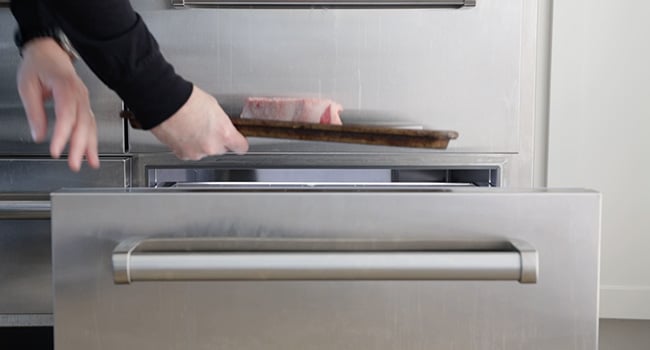
Remove the steak from the fridge, season it with freshly cracked black pepper on both sides, and let it sit at room temperature for 10 minutes to help remove the chill.
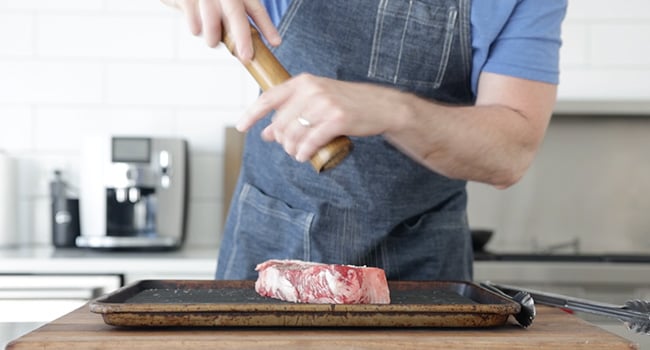
Next, place the steak fat cap side down into a large 10” to 12” carbon steel or non-stick pan, turn the heat to high, and cook for exactly two minutes. You may need to use your tongs to hold it upright.
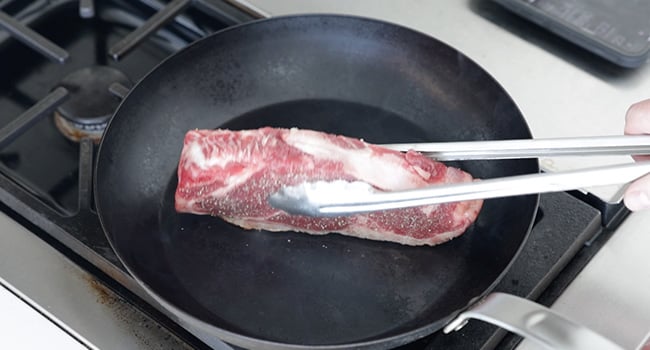
Lay the steak flat and let it stand for exactly one minute. Then, using tongs, move the steak around in a circular motion for one minute. This will help completely brown the top of the steak.
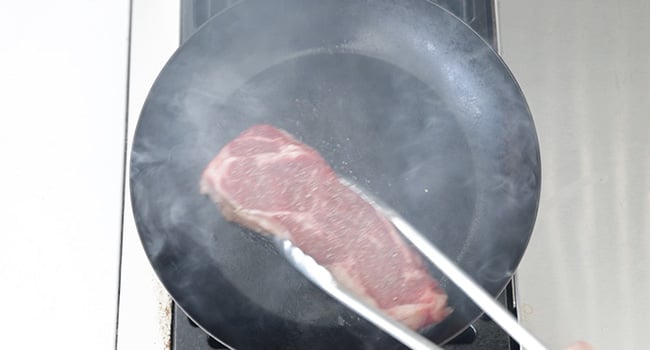
Flip the steak over and repeat the exact same process.
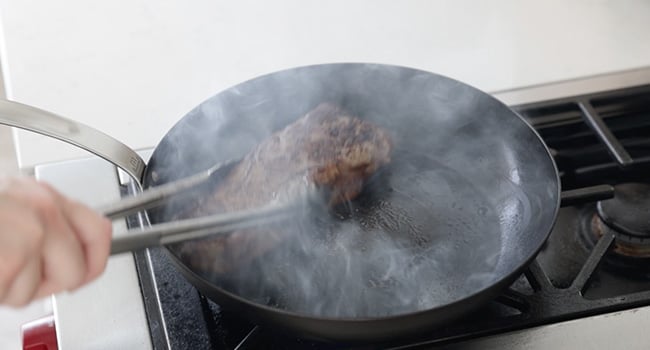
Turn the heat down to medium, flip the steak over again, and let it sit for two minutes. Repeat this process every two minutes until the desired internal temperature is achieved. I prefer a medium-rare internal temperature, which takes 12 to 14 minutes total, to achieve, for a thick 1 ½ to 2-inch steak. It’s best, however, to use a thermometer.
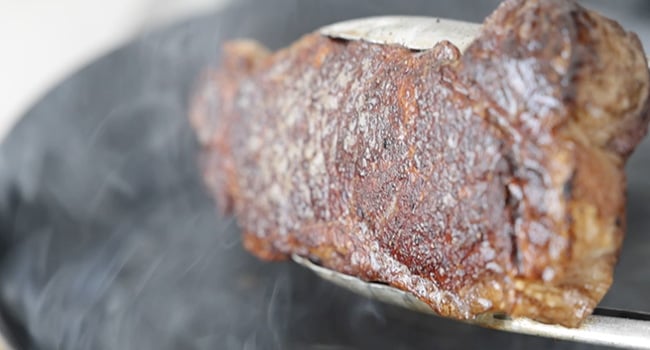
Remove the steak and rest on a rack over a sheet tray for 5 to 7 minutes.
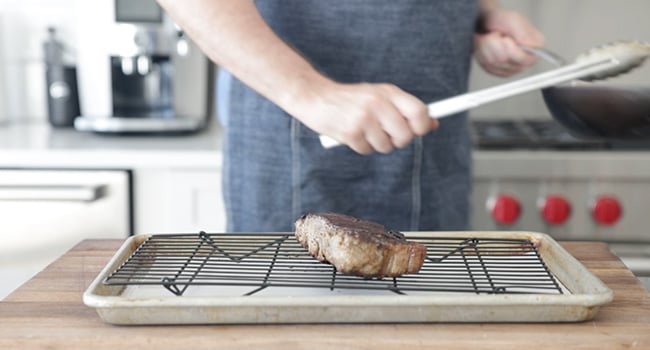
Finish by adding on optional herb butter.
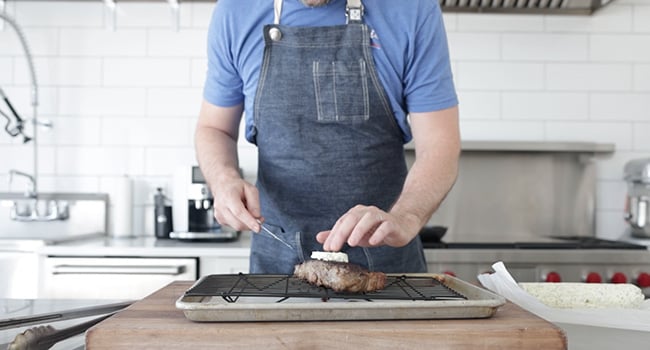
Slice and serve the steak.
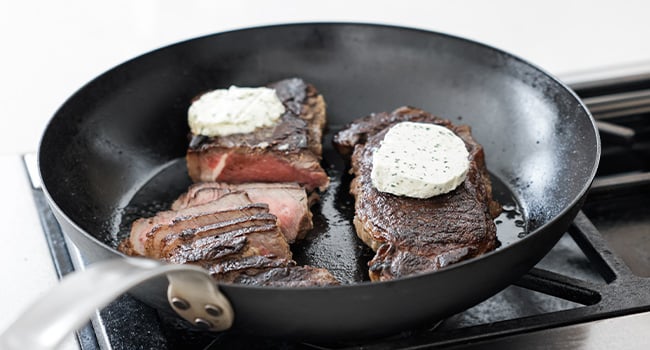
Make-Ahead and Storage
Make-Ahead: This is meant to be eaten as soon as it is done cooking.
How to Store: Cover and keep in the refrigerator for 3 days. This recipe will not freeze well.
How to Reheat: This recipe does not reheat well, but if you need to reheat it, re-sear it in a hot pan with lightly smoked oil until warm.

Chef Notes + Tips
- If you feel like you may have cooked it a bit too long, set it upright when resting it to help heat escape more quickly.
- If you let the steak sit seasoned for more than 24 hours, it causes it to begin drying out.
- The best pans for cold searing the steak is non-stick or carbon steel.
- Maillard reaction, also known as the browning reaction, is an interaction between sugar and amino acids in the steak when heated to 285°and 350° over high heat, browning the meat to enhance the flavor and add more crispness. This is not the same as caramelizing.
- You will need at least a 12” pan to sear multiple steaks simultaneously.
- Since I prefer my steak medium rare, I remove it from the pan at 120° to 122° to account for carry-over cooking, where the steak will bump up 1° to 5° as it rests.
More Steak Recipes

Video
Cold Sear Steak Recipe
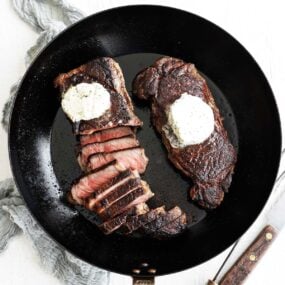
Equipment
Ingredients
- 2 12-16 ounce New York Strip Steaks at least 1 ½ inches thick
- coarse salt and freshly cracked pepper to taste
- optional maître D’ butter
Instructions
- Start by patting the steak down on all sides with paper towels. Moisture is always the enemy of achieving a good Maillard brown crust.
- Place the steak on a rack over a sheet tray and generously season both sides with coarse salt.
- Put the steak on the rack in the refrigerator uncovered for 4 to 24 hours. During this time, the salt will penetrate into the steak, making every bite delicious. In addition, it will help dry out the outer surface for optimal searing.
- Remove the steak from the fridge, season it with freshly cracked black pepper on both sides, and let it sit at room temperature for 10 minutes to help take the chill off.
- Next, place the steak fat cap side down into a large 10” to 12” carbon steel or non-stick pan, turn the heat to high, and cook for exactly two minutes. You may need to use your tongs to hold it upright.
- Lay the steak flat and let it stand for exactly one minute. Then, using tongs, move the steak around in a circular motion for one minute. This will help completely brown the top of the steak.
- Cook your steak in the desired fashion of your choice.
- Flip the steak over and repeat the exact same process.
- Turn the heat down to medium, flip the steak over again, and let it sit for two minutes. Repeat this process every two minutes until the desired internal temperature is achieved. I prefer a medium-rare internal temperature, which takes a total of 12 to 14 minutes to achieve for a thick 1 ½ to 2-inch steak. It’s best, however, to use a thermometer.
- Remove the steak and rest on a rack over a sheet tray for 5 to 7 minutes. Finish by adding on optional herb butter.

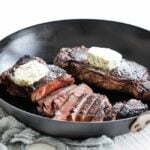
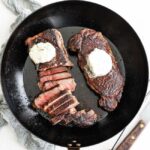
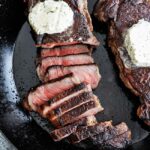
Hi Chef Billy! Would you recommend doing the dry brine and cold sear together? Thanks
You definitely could!
WOW!! This steak looks amazing…I have never tried this method of cooking yet.